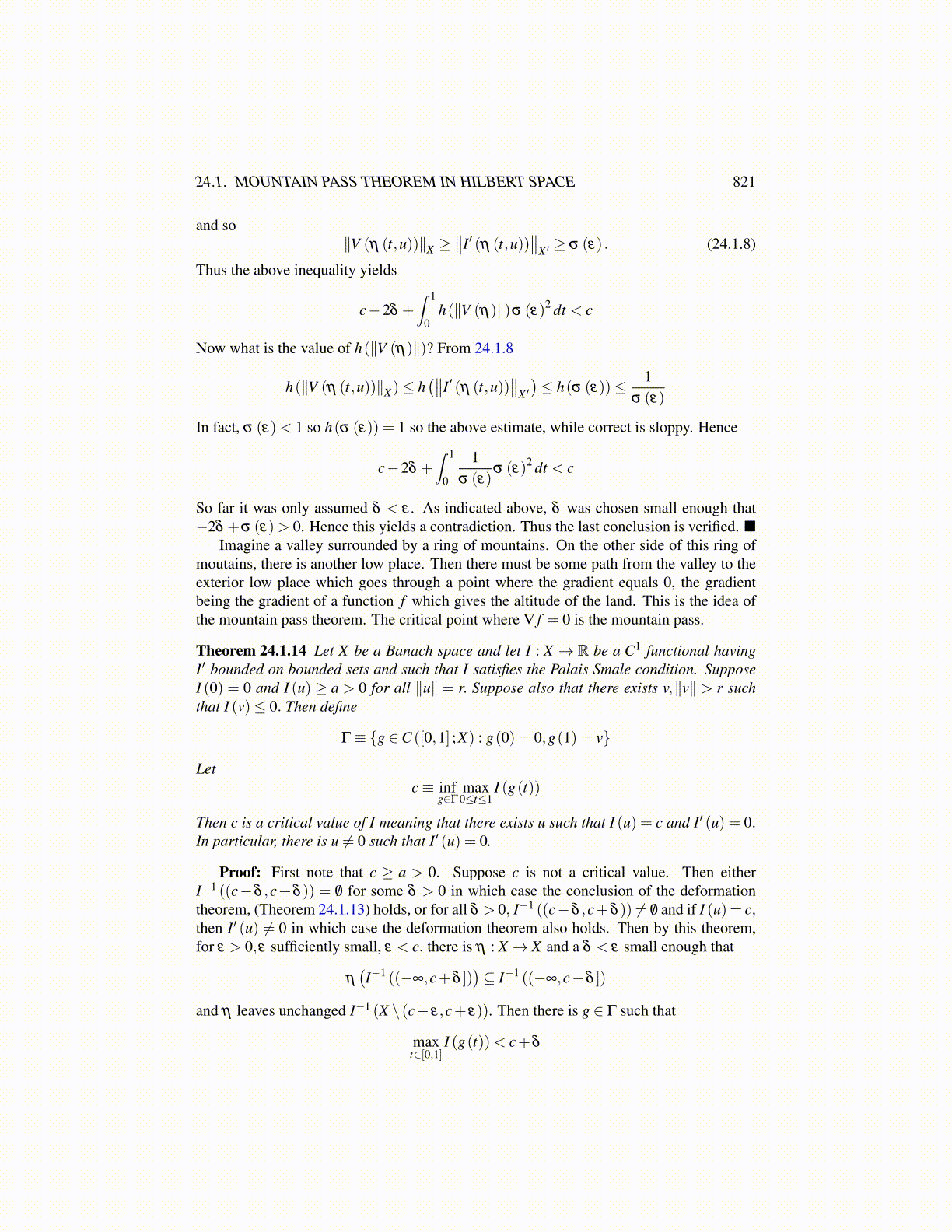
24.1. MOUNTAIN PASS THEOREM IN HILBERT SPACE 821
Also, it is being assumed that I (η (1,u)) > c− δ and so by the third conclusion shownabove, η (t,u) ∈ B for t ∈ [0,1]. We also know that for such values of η (t,u) ,∥∥I′ (η (t,u))
∥∥≥ σ (ε)
from Claim 1. Now ∥∥I′ (x)∥∥2
X ′ ≤⟨I′ (x) ,V (x)
⟩≤∥∥I′ (x)
∥∥∥V (x)∥
and so∥V (η (t,u))∥X ≥
∥∥I′ (η (t,u))∥∥
X ′ ≥ σ (ε) . (24.1.8)
Thus the above inequality yields
c−2δ +∫ 1
0h(∥V (η)∥)σ (ε)2 dt < c
Now what is the value of h(∥V (η)∥)? From 24.1.8
h(∥V (η (t,u))∥X )≤ h(∥∥I′ (η (t,u))
∥∥X ′)≤ h(σ (ε))≤ 1
σ (ε)
In fact, σ (ε)< 1 so h(σ (ε)) = 1 so the above estimate, while correct is sloppy. Hence
c−2δ +∫ 1
0
1σ (ε)
σ (ε)2 dt < c
So far it was only assumed δ < ε . As indicated above, δ was chosen small enough that−2δ +σ (ε)> 0. Hence this yields a contradiction. Thus the last conclusion is verified.
Imagine a valley surrounded by a ring of mountains. On the other side of this ring ofmoutains, there is another low place. Then there must be some path from the valley to theexterior low place which goes through a point where the gradient equals 0, the gradientbeing the gradient of a function f which gives the altitude of the land. This is the idea ofthe mountain pass theorem. The critical point where ∇ f = 0 is the mountain pass.
Theorem 24.1.14 Let X be a Banach space and let I : X → R be a C1 functional havingI′ bounded on bounded sets and such that I satisfies the Palais Smale condition. SupposeI (0) = 0 and I (u) ≥ a > 0 for all ∥u∥ = r. Suppose also that there exists v,∥v∥ > r suchthat I (v)≤ 0. Then define
Γ≡ {g ∈C ([0,1] ;X) : g(0) = 0,g(1) = v}
Letc≡ inf
g∈Γmax
0≤t≤1I (g(t))
Then c is a critical value of I meaning that there exists u such that I (u) = c and I′ (u) = 0.In particular, there is u ̸= 0 such that I′ (u) = 0.